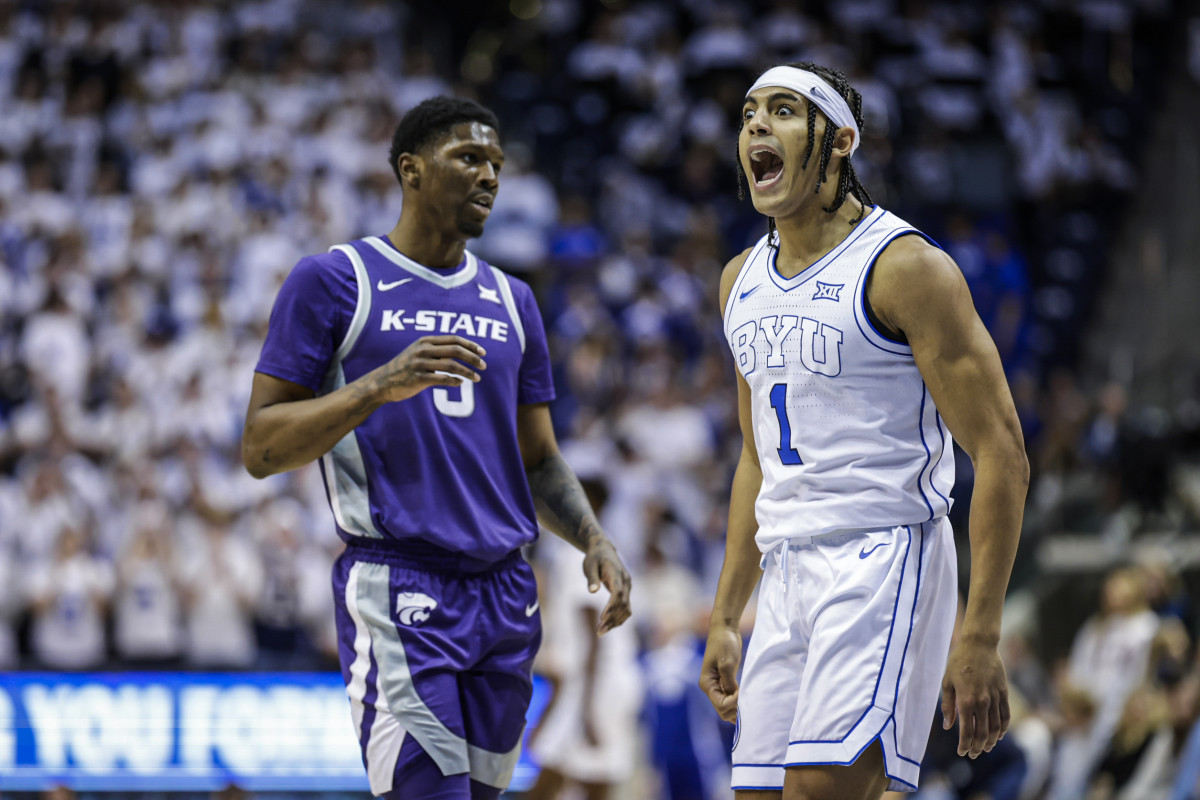No Sunday Play Likely Cost BYU Basketball a Seed Line in NCAA Tournament
On Sunday, the NCAA unveiled the 2024 men's NCAA Tournament bracket. Most BYU fans were surprised when BYU was announced as a 6-seed. As a 6-seed, the Cougars will face 11-seed Duquesne in Omaha in the first round. On Sunday morning, BYU was the consensus top 5-seed according to the country's top bracketologists. 30 bracketologists updated their projections on Sunday morning and all 30 of them had BYU as a 5-seed.
So why was BYU a 6-seed? Maybe the committee didn't like BYU's non-conference strength of schedule? Or BYU's road record? Turns out, it was neither of those things.
After the bracket was unveiled, CBS showed the overall seeding of the teams in the field. BYU was the 17th overall seed, meaning BYU should have been a 5-seed (not only a 5-seed, but the top 5-seed). In other words, there was no variance between the bracketologists' projections for BYU and the committee's perspective of BYU - they both agreed BYU was the top 5-seed.
There are a few potential explanations for BYU's slide. By rule, BYU couldn't have played any team in the first round that they played in the regular season. That rule can move teams a spot or two down the S-Curve (the system that is used to determine the matchups in the tournament). Additionally, the committee tries to prevent teams from the same conference from playing each other before the regional final round. In BYU's case, the committee would try to avoid a BYU-Kansas rematch in the second round. However, "try" is the key word there. That's a preference, not a rule. Two teams from the same conference can play each other after the first round if the committee is unable to balance the bracket. It seems unlikely that the committee would have punished BYU 4+ spots in an effort to balance the bracket.

In fact, it's very unlikely. No other team in the field was pushed down as many spots relative to their overall seeding - even while the committee was trying balance the bracket.
Therefore, the most likely explanation for the committee sliding BYU all the way from the top 5-seed to a 6-seed: BYU's no-Sunday play policy. It definitely wouldn't be the first time that no Sunday play has cost BYU in terms of postseason seeding - and that's a sacrifice BYU is more than willing to make.
Update: It was confirmed by CBS that BYU's policy to not play on Sunday bumped them down a seed line.
BYU moved down and Gonzaga moved up to accommodate BYU’s Thursday/Saturday schedule requirements, according to what Clark Kellogg was told by committee chair. pic.twitter.com/D4PbZqYyFy
— rainorsnow (@rosBYU) March 17, 2024
If the Cougars are in line to be the next team selected but the game falls on a Friday/Sunday, BYU is pushed down a seed until the next available Thursday/Saturday matchup. That, combined with the committee balancing the bracket, likely cost BYU a seed-line in the NCAA Tournament.
However, it sure looks like the committee tried to set BYU up with the most favorable matchup among the 6-seeds. Of the four 11-seeds, Duquesne is the worst team on paper:
- Duquesne - 86th in KenPom
- NC State - 58th in KenPom
- Oregon - 55th in KenPom
- New Mexico - 23rd in KenPom
In fact, Duquesne is a more favorable matchup than most of the 12-seeds that BYU could have played as a 5-seed:
- Grand Canyon - 53rd KenPom
- McNeese State - 60th KenPom
- James Madison - 59th in KenPom
- UAB - 106th in KenPom
In conclusion, BYU's no-Sunday play likely cost BYU a seed line, but BYU is still in one of the more favorable matchups among the 5-seeds and 6-seeds.
Now that the matchups are set, it comes down to BYU's ability to survive and advance. In the words of Jon Rothstein: This is March.
Follow us for future coverage:
Facebook - @CougsDaily
Twitter - @Cougs_Daily and Casey Lundquist at @casey_lundquist
Instagram - @cougs_daily
